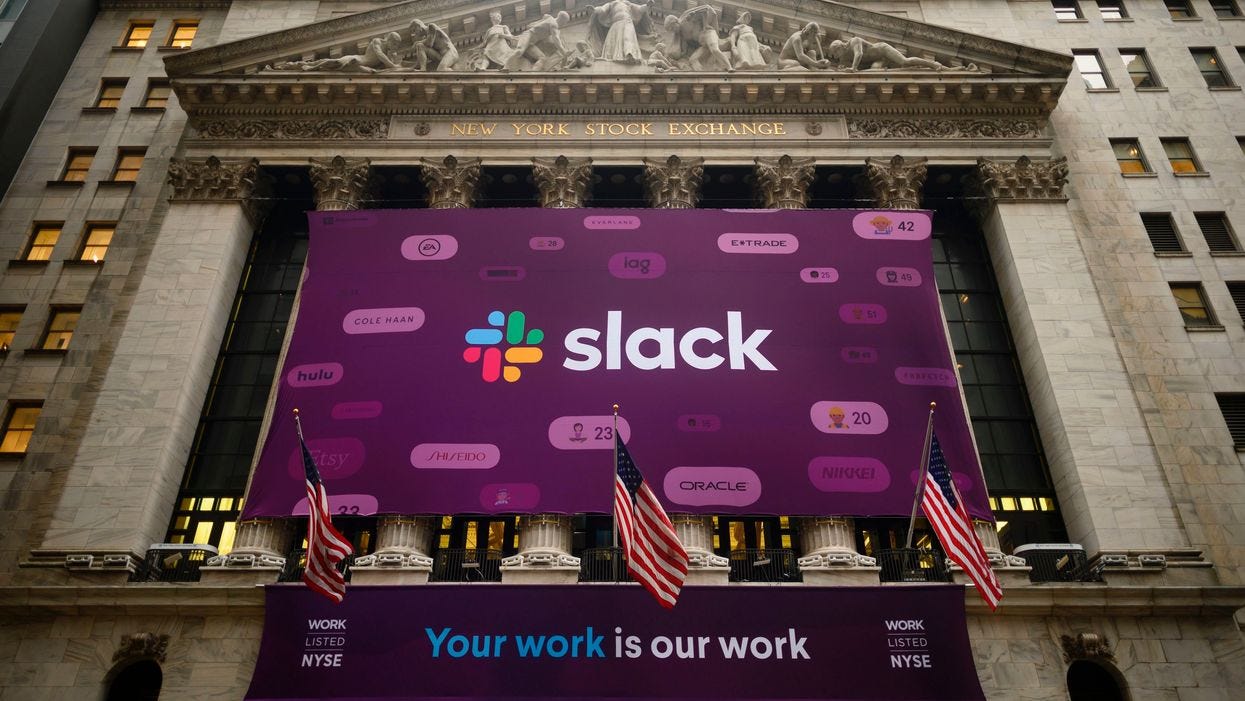Salesforce+Slack
The deal makes a lot of sense for both parties and can help transform Salesforce UX. It is unlikely though to make a dent in Microsoft's domination of the productivity tools market.
Salesforce buying Slack for $27.7B today came as little surprise given the rumors and signaling since last week. It was a great outcome for Slack and an appropriate bet for Salesforce to make. While it will surely transform the user interface for aspects of Salesforce’s CRM and make their products more collaborative, I am not convinced it can challenge Microsoft’s domination of workplace productivity tools.
First, the Salesforce perspective:
Even though the purchase price sounds high, it is <10% of Salesforce’s current valuation. It is absolutely a worthwhile strategic bet to make, even though it will be margin dilutive for quite some time. It is also in line with Salesforce’s MO of paying premiums for the best companies, based on their ability to amplify distribution. This has indeed been true for Mulesoft, Tableau, and Exact Target.
UX has never been the strength of Salesforce applications; their native messaging product Chatter was an interesting capability but never found widespread adoption. Salesforce has an opportunity to re-imagine their UX for core products like Sales, Service, and Marketing using a modern conversational and collaboration based interface like Slack. Slack’s search capabilities traversing conversational logs are market-leading and unique.
Slack is an open platform with both native and community-built integrations to hundreds of popular applications. This complements the Salesforce App-Exchange model (last-mile and complementing applications) with an open ecosystem approach that brings read and write access of third party apps into the heart of all Salesforce products.
Traditionally, Slack has been used only for internal communication within the enterprise, but new capabilities like Slack Connect allow enterprises to communicate with suppliers, partners, and customers. The enterprise grid, and advanced security features (like Enterprise Key Management) provide Salesforce a new way to re-imagine B2B communications. Helping enterprises move from stodgy e-mail and messy UIs to real-time, easy, continuous, and collaborative interfaces is a damn good transformation story.
Slack is used wall-to-wall across all departments —not just in the front-office— and is particularly strong in development/engineering organizations. This gives Salesforce access to new buying centers.
Slack has been re-positioning itself as a conversational network, and it will be interesting to see if Salesforce adopts and expands this stance. The Salesforce business model has traditionally been a pipe (sell and deploy 1:1) with no network effects; if the Salesforce network becomes a real thing with customers accruing more benefits with the increased size of the network, it creates a bigger moat and boosts lock-in.
Now, Slack also supports video conferencing and the productivity suite is an alternative to Microsoft Teams and Zoom. Teams has a distinct advantage with Office 365 integration, and Zoom is a distinctly better video experience so I am skeptical this move can challenge Microsoft or Zoom in any substantive way.
Now that Salesforce has decided to play in the “future of work” space, additional acquisitions like Box or Asana, or even a next generation video calling service, come into the realm of future possibilities.
From a Slack perspective,
This is a great outcome. It is a 30% premium over the IPO price and 48% higher from the valuation before the deal became known.
Could they have improved their valuation as an independent company? Maybe, but they were struggling to compete with Microsoft which has a fully integrated suite and they needed support from a bigger player. There is a non-trivial chance their business could have taken a very unfavorable turn post-pandemic, so they likely concluded that the risk-adjusted expected value is likely substantively less than the Salesforce offer.
It accelerates Slack’s roadmap and makes their platform central to Salesforce. The acquirer has a similar culture, is co-located in the same city, and many Slack executives worked previously at Salesforce.
This is a key milestone on Salesforce’s journey to quadruple revenues and valuation in the next 5-10 years. Please read my series on the Salesforce flywheel to learn more.


